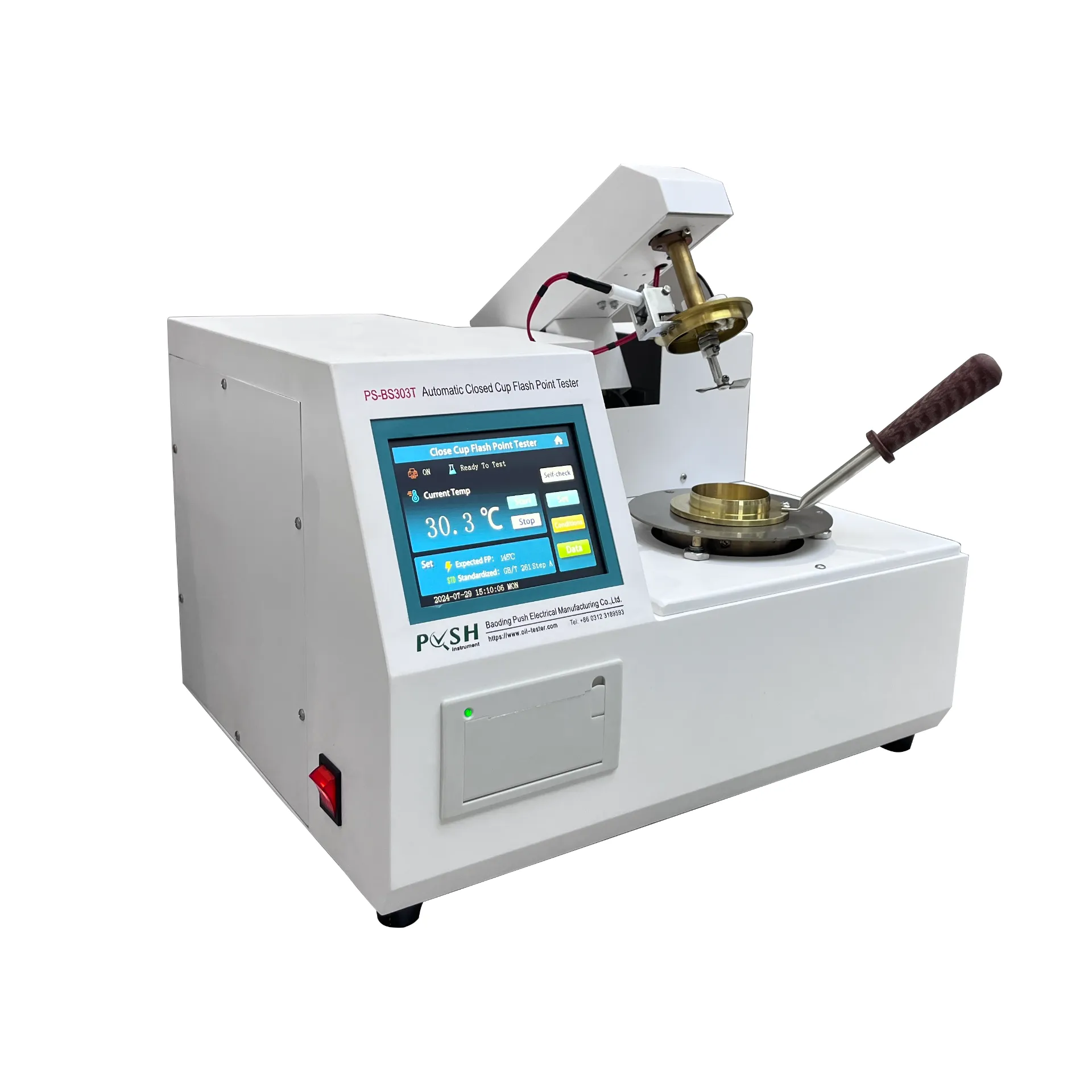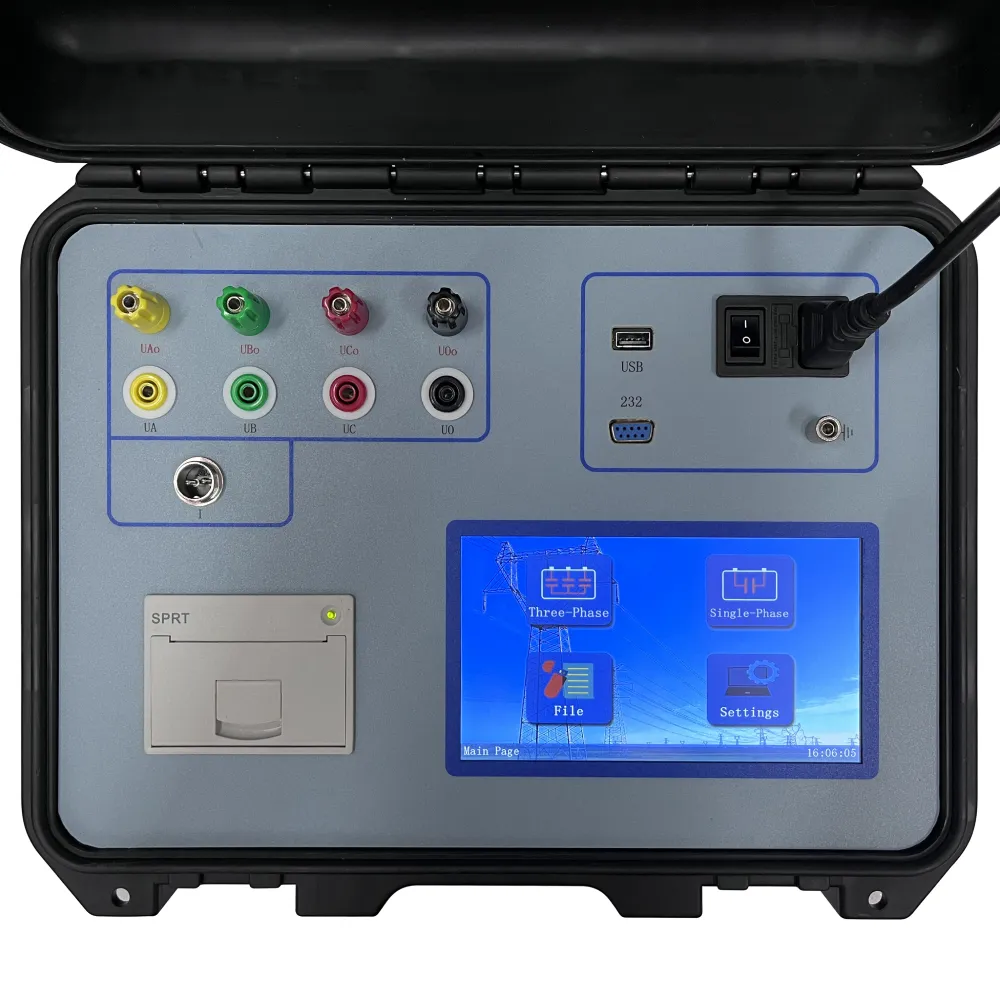TEL:
+86-0312-3189593
 English
English

Telephone:0312-3189593

Email:sales@oil-tester.com
2 月 . 15, 2025 22:18
Back to list
transformer ratio meter working
A Transformer Ratio Meter, often abbreviated as TRM, is a sophisticated device used for measuring the turns ratio of transformers. As an essential tool in the realm of electrical engineering, its applications and working principles are both intriguing and crucial for professionals dealing with power systems and electrical equipment maintenance.
Furthermore, some TRMs are equipped with capabilities to test transformer condition under various loading conditions. This feature is particularly important for assessing the operational status of transformers in situ, allowing engineers to detect potential faults before they escalate into costly repairs or replacements. The deployment of Transformer Ratio Meters extends beyond routine maintenance. During transformer manufacturing, quality assurance engineers rely on TRMs to ensure that each unit meets specified design parameters. This early-stage intervention helps mitigate risks associated with deploying defective transformers, safeguarding both the equipment and the systems they support. Another aspect where TRMs exemplify their utility is in the assessment of transformer efficiency. By confirming that the transformer operates close to its designed turns ratio, engineers can predict energy losses and devise strategies to optimize performance. This predictive maintenance approach not only enhances the lifespan of transformers but also supports sustainability by reducing energy waste. Safety, of course, is paramount when employing a Transformer Ratio Meter. Professionals must adhere to strict safety protocols, including using appropriately rated insulating equipment and ensuring the transformer is de-energized before testing. Following these precautions helps mitigate the inherent risks of working with high-voltage equipment and ensures the integrity of the testing process. In conclusion, the Transformer Ratio Meter is a vital instrument in the toolkit of electrical engineers. Its role in verifying transformer integrity, diagnosing potential issues, and supporting efficient power system operation underscores its importance. As technology continues to evolve, the TRM adapts, incorporating features that enhance accuracy and ease of use. Mastery of this device not only reflects professional expertise but also contributes to the broader goal of maintaining reliable and safe electrical infrastructures.


Furthermore, some TRMs are equipped with capabilities to test transformer condition under various loading conditions. This feature is particularly important for assessing the operational status of transformers in situ, allowing engineers to detect potential faults before they escalate into costly repairs or replacements. The deployment of Transformer Ratio Meters extends beyond routine maintenance. During transformer manufacturing, quality assurance engineers rely on TRMs to ensure that each unit meets specified design parameters. This early-stage intervention helps mitigate risks associated with deploying defective transformers, safeguarding both the equipment and the systems they support. Another aspect where TRMs exemplify their utility is in the assessment of transformer efficiency. By confirming that the transformer operates close to its designed turns ratio, engineers can predict energy losses and devise strategies to optimize performance. This predictive maintenance approach not only enhances the lifespan of transformers but also supports sustainability by reducing energy waste. Safety, of course, is paramount when employing a Transformer Ratio Meter. Professionals must adhere to strict safety protocols, including using appropriately rated insulating equipment and ensuring the transformer is de-energized before testing. Following these precautions helps mitigate the inherent risks of working with high-voltage equipment and ensures the integrity of the testing process. In conclusion, the Transformer Ratio Meter is a vital instrument in the toolkit of electrical engineers. Its role in verifying transformer integrity, diagnosing potential issues, and supporting efficient power system operation underscores its importance. As technology continues to evolve, the TRM adapts, incorporating features that enhance accuracy and ease of use. Mastery of this device not only reflects professional expertise but also contributes to the broader goal of maintaining reliable and safe electrical infrastructures.
Previous:
Latest news
-
Differences between open cup flash point tester and closed cup flash point testerNewsOct.31,2024
-
The Reliable Load Tap ChangerNewsOct.23,2024
-
The Essential Guide to Hipot TestersNewsOct.23,2024
-
The Digital Insulation TesterNewsOct.23,2024
-
The Best Earth Loop Impedance Tester for SaleNewsOct.23,2024
-
Tan Delta Tester--The Essential Tool for Electrical Insulation TestingNewsOct.23,2024





